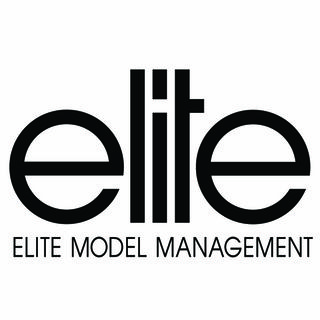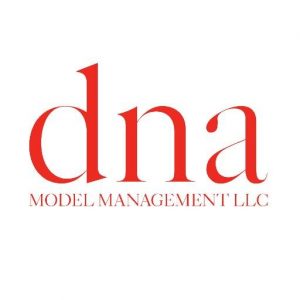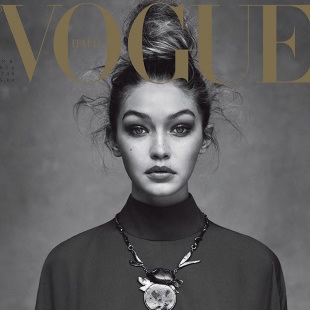Models often feel like the holy grail of their efforts is getting an agency. Not true! It’s when you have an agency that the going gets tough. They will have you do all the things necessary to prepare you for the market, and then send you out to compete.
Actually getting jobs is up to you. Here’s some of what you can expect:
Location
You will probably have to go to where they are. At the beginning you may need to be there only for a few weeks for development, but ultimately you will have to move to where they are before you get very much work. They may also send you to other markets (such as Milan or Paris) to accelerate your development. They may or may not offer to advance the costs of your moves – be sure to ask.
Development
Fashion Agencies
The Life Cycle of an Editorial Fashion Model Career Fashion clients respond to two primary cues in selecting models:
(a) youth, freshness, newness, and (b) experience and market acceptance, as demonstrated by a model’s appearance in fashion editorials and other high-end fashion advertising campaigns.
These two cues are somewhat contradictory, but never mind that: it’s fashion. When “freshness” dominates the mind of the client, a model may be picked for a job right off Polaroids shot that very day by her agency. But more commonly fashion clients “follow the herd”. If they see a portfolio full of tear sheets they draw two conclusions: she is a good, reliable model that can get the job done, and others have liked her look well enough to select her. Clients like to see their judgment validated by others. If a model has enough appearances she transitions to a “known face” or, better, a “known name” whose image is of special value. The rates for fashion models (for “campaigns”, but not for editorials or most “commercial fashion”) depend on her market acceptance. More editorials equals not only a higher chance of being selected, but of being paid more when selected. Rates are set on an individual basis after the “new faces” period is over. At the beginning of her career a fashion model spends her time building market acceptance. She does low-paying editorials for months, perhaps for years, until she becomes “known”. Then one day a client calls up and instead of saying, “Send me some fashion models for a go-see,” they say “I want Mabel for this job”. She has begun to arrive, and the investment in her career up to that point may now reward her with big pay days. But no matter how long she models, she will continue to do those low-paying editorials to keep her face in the public (and clients’) eye. When the world forgets about you there is always another fresher face on her way up to take your place.
The Process
Unless you come to the agency as an experienced model with a lot of professional work behind you, a fashion agency will almost certainly ask you to get new pictures. They may also suggest a new hair color or cut, wardrobe that you need, or exercise and diet to slim and tone your body, and will have you visit a manicurist. They might even send you to another country for experience and to build your book. The agency may send you on “rounds” so clients can get to know you. Depending on the agency, the “development” process can take a small number of weeks to several months. Models should assume that during this period they will make little if any money and they may have substantial expenses. If a model gets a positive response from clients on go-sees, books some editorials or good commercial jobs, she may be at the beginning of a long career.
Commercial Agencies
For this purpose “commercial fashion” and “commercial print” models are somewhat similar. Life Cycle of a Commercial Model’s Career For commercial models pay doesn’t depend on experience or “market acceptance”, but simply whatever the budget is for that job. (That is not true for “skilled” jobs like fit modeling, where experienced models can get higher rates.) From the moment you become “fully qualified” (right after you print your first comp card) until the end of your career, you compete on a more-or-lesseven footing with your peers. Commercial models do not become household names; there is no value associated with the perceived “endorsement” by an unknown model. You remain someone playing a generic role, and new models can enter at any stage of their lives. Certainly it is true that a better portfolio and a composite card full of excellent commercial tears make you more likely to get the job, but the effect is nowhere near as powerful as it is in the fashion world.
The Process
If a model comes to a commercial agency with well done commercial pictures and a composite card, the agency may decide to use what he already has, or simply get a new card printed with the agency’s format and logo. That is particularly true for agencies that have non-exclusive contracts with their models. The agency may decide to have the model modify his appearance (new haircut, gain or lose weight, tone his body) and get new pictures before deciding to place him on the market. This is a relatively quick process, and normally can be completed in a small number of weeks. Once the new card (and portfolio, if the agency requires one) is ready, the model will be sent on go-sees. But this is a distinctly different process than for fashion models. Rather than being sent around to “commercial clients” for a response, models are just sent out when a client has a specific job that they may be right for. An editorial fashion model may have a very close relationship with her agency, and visit them daily or weekly. A commercial model may make no more than a few trips to the agency over a career spanning several years. The agency is likely to be consulted only when a new card is needed, or changes in appearance are contemplated.
Self Marketing
It’s the job of the agency to market you, but you shouldn’t just leave it to them. You should network with photographers, clients, casting directors, makeup artists and stylists whenever the opportunity arises. At clubs, parties, trade shows and on modeling jobs, you need to take any opportunity presented to increase your circle of contacts.
Other Agencies
If you have a non-exclusive contract you should pursue representation from other agencies. No agency gets every modeling job, and the more eyes you have looking out for you the better. It is possible to overdo this; agencies can lose interest in you if you are almost always unavailable to them because other agencies have called you first. You need to find a balance of the right kind and number of agencies, and the right number usually isn’t “one”. Sometimes a model may find that they can be exclusive for “fashion” with one agency and work with “commercial” with another. It’s a very useful income supplement. Even models on an exclusive modeling contract may find that their agency allows them to pursue non-modeling work like TV commercials through other agencies. You should consider being listed with talent agencies.
Other Pursuits
The old joke is, “Oh, you’re a model? Which restaurant?” If you are an editorial fashion model you may not have time for another job, but most models find that they need to have some source of income just to keep afloat. Waiter, bartender, real estate agent, personal trainer, dog walker and similar jobs let a model put food on the table until their modeling career gets established. For many commercial print models, modeling is the other thing they do while they live otherwise normal lives.
How to Lose Representation and Jobs
Here’s a list of things models have actually done (some of them quite often). These things can keep you from working if you have an agency, or can cause you to lose representation:
1. Accept a booking from two different agencies at the same time, betting that one of them will be cancelled. Or accept a booking and then back out when something better comes along. If you aren’t in Intensive Care, you do the jobs you booked.
2. File an unemployment claim listing your agency as your last employer. That raises his unemployment compensation rates he pays on his employees, and really lowers his mood.
3. Be late. For anything.
4. Have your own comp card printed after the agency accepts you, without letting them see the pictures first. Use pictures VERY different from what the agency wants.
5. Make harassing, embarrassing or obnoxious posts on Internet forums. It’s not true that “it’s just the Internet.” The Internet is simply one more part of the real world, and people in that world pay attention to it.
6. Go to a casting from one agency and sign in for another agency. Sometimes they don’t find out. Sometimes they do. You really don’t want to be you when they do.
7. Share a casting an agency gave you with other models – including models from your agency. There may be a specific reason why your agency gives it to you and not someone else, and sharing it can cause embarrassment for everyone concerned.
8. Give a casting one agency gave you to another agency. If that is discovered, you are certain to be dropped.
9. Take your boyfriend, family or neighbor with you to the agency or a job. Have him hang out in the agency whenever
you come to see them.
10. Don’t show up. For anything, but especially a job.
11. Make a significant change to your look and not tell the agency.
12. Treat modeling as a form of entertainment. It’s not. It’s a job.
13. Be unpleasant to a client. If it has to be done, it’s the agency’s job, not yours.
14. Tell your agency you are available for a job when you aren’t. That makes the agent look bad to the casting director, and may cause the agency to lose clients.
15. Tell the makeup artist or hair stylist how they should work on you; or after they are done, go into the bathroom and “fix it” to the way you want it. Nobody cares how you want it.
16. Act like the director on a shoot. Your job is to do as you are told. Unless asked, do not offer your opinions or give direction to anyone else.
Getting the Most From Your Agency
All too many models treat the agency simply as a source of casting calls, and passively wait to be told where to go to apply for jobs. That is only a part of what you got the agency for. A good agency provides a wide range of services, and the more you use them, the more value you get. That’s what you are paying all that commission money for! Things you should do from time to time with your agent:
1. Discuss grooming and styling options. Is your hair, makeup and wardrobe appropriate for your “type”? Do you need to be more stylish? Less? Buy a set of scrubs and a stethoscope? Get glasses even if you don’t need them? Your agent will help with those kinds of decisions.
2. Review the way you present yourself. Do you need to appear to be a different type entirely? Gain weight? Lose weight? If the bookings aren’t coming, what can you do about your approach and self-presentation to improve them?
3. A model’s book and card should always be evolving, both because the model’s looks change, or as better pictures become available. Can the agent suggest a photographer who might do a free test?
4. You have pictures. Which should go into your book and card? Models often make awful choices. Agents should make the choices for you.
5. Get help with the process and business aspects of the profession. Ask how the agency’s policies work. There is more than one reason to do all that. The obvious benefit is to get the advice and support you are asking for. But there is a subsidiary benefit as well. Agents have a limited amount they can hold in their attention at one time. If they have more than a few models (and almost all agents do) they will tend to remember some more than others. When calls come in, the model who is uppermost in their mind will be considered first. You want to be uppermost in their mind, in a good way. Asking for advice, without being a pest, is a way to have a positive experience with your agent. That’s not the only way to be kept in mind, though. Little things can be done to help. Some models send their agents postcards with their pictures on them at monthly intervals. I’ve never found that very effective, but it’s better than doing nothing. Others bring in little gifts when they come to the office: a cup of coffee for the agent, a little box of cookies. Not enough that it’s a bribe, but a thoughtful token that will leave a positive impression.
Professional Lifespan
Fashion Models
The average career span for an editorial fashion model after being signed by a New York agency is six weeks. A considerable majority of the models put into the “New Faces” or “Test” board will get their portfolios started, make some rounds and find that there isn’t much positive response from clients. So they go home. Those that “click” may work for several years, up until their mid twenties or even later if they are very successful. But at some point they have to transition into other kinds of modeling: commercial fashion, commercial print or lifestyle work. Editorial fashion is about youth and freshness.
Commercial Print Models
Commercial models may have to reinvent themselves several times in the course of their careers, from “schoolgirl” to “glamour girl” to “young mom” to “business woman” to “grandmother”. But it is something they can do, and many models stay with a commercial agency for decades. They are less likely to burn out in a hurry since getting started and remaining in commercial print is much less demanding than editorial fashion. While a model is supporting herself as a bartender she can wait a year or two for her modeling career to really catch on. Fashion models don’t have that luxury.
Other Kinds of Models
The age for glamour models is roughly 18-25, although some particularly young-looking women can stretch that several additional years. Promotional models can start as early as 18, although mid-twenties seems preferred, and may be able to work into their 40s or later. Artists’ and specialty models often can work into their 30s and 40s. Fitness models tend to be from 18 to 25 or so, sometimes into their 30s.







Comments 0